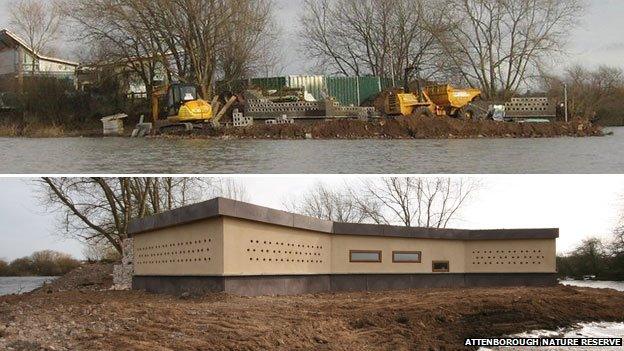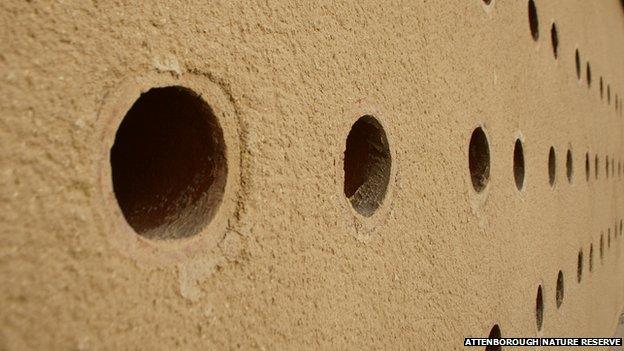Attenborough Nature Reserve's sand martin hide completed
- Published

The hide took about four months to complete at a cost of £56,000
Work to complete a hide and nesting bank for sand martins has been completed at Attenborough Nature Reserve in Nottinghamshire.
It is believed to be the first of its kind, incorporating an artificial nesting bank made of clay pipes and breeze blocks and a hide.
Cameras inside the 150 nesting tunnels will transmit images into the hide.
Tim Sexton from the nature reserve said sand martins had already started to arrive from sub-Saharan Africa.
"They are the first of the summer migrants to return - it really signals the start of summer and the end of winter," said Mr Sexton.

The hide contains 150 tunnels, which could each house a breeding pair of sand martins
"We've designed the bank to maximise breeding efficiency, if you like.
"It will be fantastic for the public to watch the sand martins as they fly over the ponds, collecting insects for their young, then back into the nesting tunnels."
The £56,000 project was paid for with a Heritage Lottery grant.
Mr Sexton added there were sand martin hides and artificial banks across the UK, but there was nowhere that combined the two.
"We will be able to access the back of the nest chambers as you would nest boxes in your garden and ring the chicks," he said.
"In the natural world you wouldn't have that opportunity."
Mr Sexton said although sand martins were not in danger in the UK, increased extreme weather like this winter's, could flood out their nests.
- Published10 March 2014
- Published17 November 2013
- Published11 September 2013